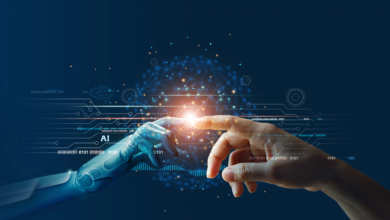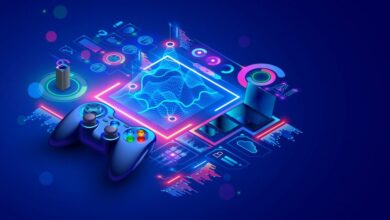
The Future of ChatGPT: Improving its Accuracy and Performance
Introduction
A team trained ChatGPT, a powerful natural language processing model, on vast amounts of data to generate human-like responses to text-based inputs. Despite its impressive capabilities, the team can improve ChatGPT’s accuracy and performance in several ways. In this article, we will explore various techniques and strategies for improving ChatGPT’s accuracy and performance.
Data Acquisition and Preprocessing
The quality of the data used to train ChatGPT has a significant impact on its accuracy and performance. In this section, we’ll discuss some best practices for data acquisition and preprocessing.
Sources of Data
One of the critical factors in acquiring data is to ensure the quality and diversity of the data sources.
To ensure a broad range of language patterns, syntax, and vocabulary, it is important to source data from a variety of reliable sources. Furthermore, incorporating data from different regions, languages, and demographics can help create a well-rounded model that is capable of handling a wide range of inputs.
Data Cleaning and Preprocessing Techniques
Once the data is acquired, it’s essential to clean and preprocess it before training the ChatGPT model. Cleaning and preprocessing techniques involve removing or correcting errors in the data, such as spelling mistakes, punctuation errors, and grammatical errors. Preprocessing the data can also include tokenizing, stemming, and lemmatization to prepare the data for training.
Ensuring Data Quality and Diversity
Ensuring the quality and diversity of the data used to train ChatGPT is critical to improving its accuracy and performance. The data used to train the model should be representative of the language patterns and vocabulary used by its intended audience. Also, data should be regularly reviewed and updated to ensure that the model stays up-to-date with changes in language usage and trends.
Model Architecture
The architecture of ChatGPT plays a critical role in its performance and accuracy. In this section, we’ll explore the current architecture and potential alternative architectures.
Current Model Architecture and its Limitations
ChatGPT’s current architecture uses a transformer-based model that allows the model to process inputs more effectively. However, the current architecture has some limitations, such as slow inference times and difficulty in handling very long text inputs. ChatGPT has a filter as well and it is possible to bypass ChatGPT’s Filter.
Alternative Architectures and Their Potential Benefits
For instance, hybrid models that combine transformer-based and RNN-based models can help to improve the handling of long inputs. Additionally, leveraging attention mechanisms can improve the model’s ability to focus on relevant parts of the input.
Selecting the Optimal Architecture for ChatGPT
Selecting the optimal architecture for ChatGPT requires careful consideration of its intended use case, data quality, and the level of accuracy required. To select the optimal architecture, it’s important to perform extensive experimentation and comparison of different architectures.
Training and Optimization
Training and optimization are critical to improving ChatGPT’s performance and accuracy. In this section, we’ll explore some strategies for optimizing ChatGPT’s training.
Optimizing Hyperparameters
One can adjust hyperparameters such as learning rates, batch sizes, and the number of epochs to improve the accuracy and performance of the model. However, finding the optimal set of hyperparameters requires experimentation and a trial-and-error approach.
Strategies for Reducing Overfitting
When a model is trained on a limited amount of data and fails to generalize to new inputs, it is known as overfitting. To reduce overfitting, it’s essential to use regularization techniques, such as dropout and early stopping, and increase the diversity and quality of the data used for training.
Training on Diverse Data to Improve Generalization
To improve the generalization of the ChatGPT model, it’s important to train it on diverse and representative data. This can help the model to learn a wide range of language patterns, syntax, and vocabulary, allowing it to handle a broad range of inputs. Additionally, if the team incorporates data from various regions, languages, and demographics, they can help ensure that the model becomes well-rounded and able to handle a wide range of inputs.
Incorporating Feedback Mechanisms
Incorporating feedback mechanisms, such as user feedback or reinforcement learning, can help to improve ChatGPT’s accuracy and performance over time. Feedback mechanisms allow the model to learn from its mistakes and adjust its responses accordingly. Additionally, incorporating feedback mechanisms can help to improve the model’s ability to handle complex and nuanced inputs.
Evaluation Metrics
Evaluating the performance of ChatGPT is critical to improving its accuracy and performance. In this section, we’ll explore some evaluation metrics that can be used to measure the model’s performance.
Metrics for Measuring Accuracy
Accuracy is a critical factor in measuring the performance of ChatGPT. Metrics such as precision, recall, and F1 score can be used to measure the model’s accuracy in responding to different inputs.
Metrics for Measuring Performance
Measuring the performance of ChatGPT involves evaluating its speed, memory usage, and other factors that affect its ability to process inputs. Metrics such as inference time and memory usage can be used to measure the model’s performance.
Ensuring the Quality of Evaluation of Data
The quality of the data used to evaluate ChatGPT is critical to ensuring that the evaluation metrics are accurate and representative. The evaluation data should be diverse and representative of the language patterns and vocabulary used by its intended audience.
Error Analysis and Debugging
Error analysis and debugging are critical to improving ChatGPT’s accuracy and performance. In this section, we’ll explore some strategies for error analysis and debugging.
Identifying Common Errors
Analyzing the model’s responses to different inputs can help identify common errors in ChatGPT’s performance and accuracy.
Debugging and Correcting Errors
Once errors have been identified, it’s essential to debug and correct them. Debugging and correcting errors can involve updating the model’s training data, adjusting hyperparameters, or making changes to the model architecture.
Conclusion
Improving ChatGPT’s accuracy and performance is an ongoing process that requires continuous monitoring, evaluation, and adjustment. Following the techniques and strategies outlined in this article can help achieve an improvement in ChatGPT’s ability to generate human-like responses to text-based inputs. By doing so, ChatGPT can become a more powerful and effective tool for natural language processing. In particular, incorporating feedback mechanisms and sourcing data from a variety of reliable sources, regions, languages, and demographics are essential steps for enhancing ChatGPT’s performance. With these techniques in place, ChatGPT can better handle complex and nuanced inputs, thereby making it an even more valuable resource for natural language processing.




